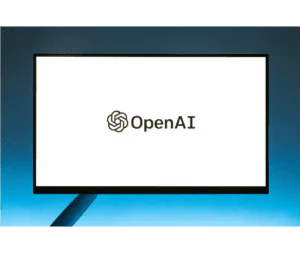
The popularity of generative AI has increased dramatically across several sectors. Its extensive applications encompass anything from product design to consumer interactions and content generation. Generative AI offers a potential way for organizations to use enormous volumes of information as they depend more on data-driven decision-making. Employees may focus on higher-value jobs that require human ingenuity and problem-solving abilities by automating monotonous and time-consuming chores. However, when organizations adopt its capabilities, this transformational technology also sparks worries about possible threats that can materialize.
The dynamics of the workplace and employee relationships significantly changed by integrating generative AI. Although implementing AI technology has many advantages, it also presents difficulties and necessitates adaptation and change. This article analyzes how generative AI changes workplace culture, focusing on concerns about job loss and the value of maintaining a human touch in creative projects.
Employees may worry about job security as businesses use generative AI automation to eliminate time off tasks and boost productivity. The worry about job displacement stems from the idea that some jobs may be completed by AI technology more effectively and precisely than by humans. Therefore, workers may experience increased stress and uncertainty due to concerns about being replaced by robots.
It can be detrimental to human creativity and creative thought to rely only on AI-generated items. People no longer actively engaged in the creative process could feel marginalized, which could decrease their drive to offer innovative solutions.
When an organization relies significantly on AI for creative material, creative conversations among human employees may suffer. A team’s ability to be creative depends on regular brainstorming sessions, cooperative problem-solving, and exchanging different points of view. With AI taking over content creation, there may be a propensity to adhere to pre-established patterns and formulae, which might prevent the development of novel ideas and discourage the investigation of unusual or industry-disruptive ideas.
Developing something special and significant gives people a sense of success and happiness. Human employees may feel less satisfied personally and less accomplished after finishing their tasks when AI takes the lead in creating content.
Unquestionably, generative AI can produce creative works and materials with astounding precision and efficiency. If organizations rely on AI-generated products without human interaction, there is a risk of creative stagnation. Although AI can create content based on trends and past data, it could need more depth of emotion, unique viewpoints, and personal experiences that employees bring to their work.
The dynamics of the workplace and employee experiences may be significantly impacted by integrating AI into organizational practices. While AI, especially generative AI, offers useful capabilities, keeping the human element in creative endeavors is still crucial to fostering a healthy organizational culture.

Organizations must invest in programs to reskill and upskill their personnel to succeed in AI-driven workplaces. As AI technologies automate some operations, individuals must develop new skills to keep up with the shifting job market. Employees that receive upskilling are more equipped to collaborate with AI systems and provide their special human traits while using AI’s efficiency.
Organizations should embrace AI as a stimulus for innovation rather than viewing it as a threat to creativity. Generative AI may help produce concepts, materials, and solutions that encourage and test employees’ capacity for original thought. Creating a secure environment where staff members may experiment, take calculated risks, and investigate novel possibilities is vital to fostering an innovative culture.
Transparency and ethical issues must be prioritized when organizations implement generative AI. Building trust among workers and stakeholders begins with open communication about the goals and effects of AI integration. Organizations may allay worries and misconceptions by being transparent about how AI technologies are utilized and the justifications for their use.
Organizations must wholeheartedly embrace the future of AI to stay competitive and relevant in the ever-evolving landscape. Striking the right balance between AI integration and preserving human ingenuity is critical to unlocking the full potential of this transformative technology. By leveraging AI’s capabilities to streamline processes, enhance productivity, and foster innovation, organizations can empower their workforce to focus on higher-value tasks that require creativity and critical thinking. Embracing the future of AI enables organizations to adapt, grow, and thrive in a world where human-machine collaboration paves the way for unprecedented possibilities and success.